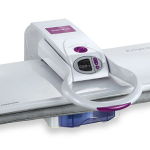This post contains affiliate links which will enable us to earn some commission if you click and buy.
Ironing board comes in various sizes. But size is not the only determinant of weight. There are other considerations that come into the picture. In other words, ironing boards of the same size do not necessarily weigh the same. Some people prefer a lightweight ironing board while others would rather have a heavier version. Personally, I prefer a heavier ironing board.
But how much does an ironing board weigh anyway? How heavy is heavy? If you are shopping for an ironing board, should you look into the weight as one of your buying considerations? The answer to that is certainly yes if you are going to fold it up after use and move it from one place to another. On the other hand, if the ironing board’s location is going to be permanent, perhaps the size and weight may not be as important. But then again, apart from the ease of portability, other factors might also come into play because the weight of an ironing board might have a bearing on its performance too.
What Is An Ironing Board’s Weight?

A standing ironing board weighs anywhere from around 9 lbs to about 20 lbs. The lengths of the ironing surface can range from 35″ to 54″ while the widths are between 13″ to 18″. These are the dimensions that are commonly available although there may be other extra small or extra large ironing boards for more specific uses.
For example, the Homz Contour Steel Top Ironing Board weighs about 9 lbs with an ironing surface area of 53″ x 13″. But the Ironmatik Space Saving Ironing Board already weighs over 14 lbs with an ironing surface area of only of 35.4″ x 15″.
What does this mean? It means that the frame construction and quality of the materials will have a bearing on the weight. A lightweight ironing board will tend to have fewer and thinner legs. The paddings for the top table may also be thinner. So, the weight can be lighter compared to another ironing board that is heavily padded and have thicker steel tubes for its legs.
Pros And Cons Of A Lightweight Ironing Board
Pros
- Portable – You can easily move it from your storage place to wherever you wish to do your ironing. You might even be able to carry it up and down the stairs. Moreover, a lightweight ironing board is suitable for the elderly and those with weak arms.
- Cheap – The lightweight ironing boards tend to be cheaper which is great for those with a small budget.
Cons
- Flimsy – Generally, they are flimsier than heavy ironing boards with their single T-leg frame and thinner tubes.
- Wobbly – Because they are lightweight, they tend to wobble and move much more than their sturdier and more solid counterparts.
- Thin paddings – The thin layers make it harder to iron smoothly, especially when the board becomes uneven over time due to wear and tear.
Should You Buy A Heavy Ironing Board?
Given that a lightweight ironing board tends to be flimsy and wobbly, does that mean that you should invest more and get a heavier ironing board if portability is not an issue? After all, the best ironing boards tend to weigh around 15 lbs or more rather than less than 10 lbs.
Well, it really depends on how often you iron. If you hardly iron your clothes and when you do iron, it is only to press a shirt or two, there is really no necessity to splurge over $100 for a heavy and wide ironing board although that will give you better stability. If a lightweight ironing board is too flimsy for you, there is always an option to go mid-range and get something slightly heavier and better. Those ironing boards weighing around 12 to 14 lbs might be a good compromise such as the Household Essentials Euro Arch T-Leg Board.
But if you iron often and has a heavy load to do each time, I would think a heavy ironing board will be a better choice. It will be able to take the pressure better as you press your clothes and remain sturdy and stable. Because a lightweight ironing board tends to wobble and move, it can be distracting and annoying when you have a big pile to go through. You will always have to be mindful that you don’t tip the ironing board over which is difficult as the ironing session wears on.
So, it is not about how much an ironing board weighs that matters if portability is not a problem for you. It is more about your ironing frequency and workload. The more you need to use it, the more sense it makes to invest in a more solid ironing board.




Leave a Reply